-
EXECUTIVE SUMMARY
-
Market Overview
-
Key Findings
-
Market Segmentation
-
Competitive Landscape
-
Challenges and Opportunities
-
Future
-
Outlook
-
MARKET INTRODUCTION
-
Definition
-
Scope of the study
- Research Objective
- Assumption
- Limitations
-
RESEARCH METHODOLOGY
-
Overview
-
Data Mining
-
Secondary Research
-
Primary Research
- Breakdown of Primary
-
Primary Interviews and Information Gathering Process
-
Respondents
-
Forecasting Model
-
Market Size Estimation
- Top-Down Approach
-
Bottom-Up Approach
-
Data Triangulation
-
Validation
-
MARKET DYNAMICS
-
Overview
-
Drivers
-
Restraints
-
Opportunities
-
MARKET
-
FACTOR ANALYSIS
-
Value chain Analysis
-
Porter's Five Forces
- Bargaining Power of Suppliers
- Bargaining Power
- Threat of New Entrants
- Threat of Substitutes
- Intensity of Rivalry
-
Analysis
-
of Buyers
-
COVID-19 Impact Analysis
- Regional Impact
- Opportunity and
-
Market Impact Analysis
-
Threat Analysis
-
PET PACKAGING MARKET, BY APPLICATION
-
(USD BILLION)
-
Bottles
-
Containers
-
Trays
-
Films
-
Labels
-
PET PACKAGING MARKET, BY END USE (USD BILLION)
-
Food and Beverage
-
Personal Care
-
Pharmaceuticals
-
Household Products
-
PET PACKAGING MARKET, BY PRODUCT TYPE (USD
-
BILLION)
-
Rigid Packaging
-
Flexible Packaging
-
Semi-Rigid
-
Packaging
-
PET PACKAGING MARKET, BY RAW MATERIAL (USD BILLION)
-
Virgin PET
-
Recycled PET
-
Biodegradable PET
-
PET PACKAGING
-
MARKET, BY REGIONAL (USD BILLION)
-
North America
- US
- Canada
-
Europe
- Germany
- UK
- Russia
- Italy
- Spain
-
France
-
Rest of Europe
-
APAC
- China
- India
- South Korea
- Malaysia
- Thailand
- Indonesia
- Rest of APAC
-
Japan
-
South America
- Mexico
- Argentina
- Rest of South
-
Brazil
-
America
-
MEA
- GCC Countries
- South Africa
- Rest of MEA
-
COMPETITIVE LANDSCAPE
-
Overview
-
Competitive Analysis
-
Market share Analysis
-
Major Growth Strategy in the PET Packaging Market
-
Competitive
-
Benchmarking
-
Leading Players in Terms of Number of Developments in the
-
PET Packaging Market
-
Key developments and growth strategies
- Merger & Acquisitions
- Joint Ventures
-
New Product Launch/Service Deployment
-
Major Players Financial Matrix
- Major Players R&D Expenditure. 2023
-
Sales and Operating Income
-
COMPANY PROFILES
-
Alpla
- Financial Overview
- Products Offered
- Key Developments
- SWOT Analysis
- Key Strategies
-
Greiner Packaging
- Financial
- Products Offered
- Key Developments
- Key Strategies
-
Overview
-
SWOT Analysis
-
CocaCola
- Financial
- Products Offered
- Key Developments
- Key Strategies
-
Overview
-
SWOT Analysis
-
Petrochemical Company
- Financial Overview
- Products Offered
- Key Developments
- SWOT Analysis
- Key Strategies
-
DecoPac
- Financial Overview
- Products Offered
- Key Developments
- SWOT Analysis
- Key Strategies
-
DAK Americas
- Financial Overview
- Products Offered
- Key
- SWOT Analysis
- Key Strategies
- Financial Overview
- Products Offered
- SWOT Analysis
- Key Strategies
- Financial Overview
- Products Offered
- SWOT Analysis
- Key Strategies
- Financial Overview
- Products Offered
- SWOT Analysis
- Key Strategies
- Financial Overview
- Products Offered
- Key Developments
- SWOT Analysis
- Key
-
Developments
-
SABIC
-
Key Developments
-
Plastipak
-
Key Developments
-
Amcor
-
Key Developments
-
Eastman Chemical
-
Strategies
-
Krones
- Financial Overview
- Key Developments
- SWOT Analysis
- Key Strategies
-
Products Offered
-
PepsiCo
- Financial Overview
- Products Offered
- Key Developments
- SWOT
- Key Strategies
-
Analysis
-
Nestle
- Financial
- Products Offered
- Key Developments
- Key Strategies
-
Overview
-
SWOT Analysis
-
M and G Chemicals
- Products Offered
- Key Developments
- SWOT Analysis
- Key Strategies
-
Financial Overview
-
Indorama
- Financial Overview
- Products Offered
- SWOT Analysis
- Key Strategies
-
Ventures
-
Key Developments
-
APPENDIX
-
References
-
Related Reports
-
LIST OF
-
TABLES
-
LIST OF ASSUMPTIONS
-
NORTH AMERICA PET
-
PACKAGING MARKET SIZE ESTIMATES & FORECAST, BY APPLICATION, 2019-2032 (USD BILLIONS)
-
NORTH AMERICA PET PACKAGING MARKET SIZE ESTIMATES & FORECAST,
-
BY END USE, 2019-2032 (USD BILLIONS)
-
NORTH AMERICA PET PACKAGING
-
MARKET SIZE ESTIMATES & FORECAST, BY PRODUCT TYPE, 2019-2032 (USD BILLIONS)
-
NORTH AMERICA PET PACKAGING MARKET SIZE ESTIMATES & FORECAST,
-
BY RAW MATERIAL, 2019-2032 (USD BILLIONS)
-
NORTH AMERICA PET PACKAGING
-
MARKET SIZE ESTIMATES & FORECAST, BY REGIONAL, 2019-2032 (USD BILLIONS)
-
US PET PACKAGING MARKET SIZE ESTIMATES & FORECAST, BY APPLICATION,
-
US PET PACKAGING MARKET SIZE ESTIMATES &
-
FORECAST, BY END USE, 2019-2032 (USD BILLIONS)
-
US PET PACKAGING MARKET
-
SIZE ESTIMATES & FORECAST, BY PRODUCT TYPE, 2019-2032 (USD BILLIONS)
-
TABLE
-
US PET PACKAGING MARKET SIZE ESTIMATES & FORECAST, BY RAW MATERIAL, 2019-2032
-
(USD BILLIONS)
-
US PET PACKAGING MARKET SIZE ESTIMATES & FORECAST,
-
BY REGIONAL, 2019-2032 (USD BILLIONS)
-
CANADA PET PACKAGING MARKET
-
SIZE ESTIMATES & FORECAST, BY APPLICATION, 2019-2032 (USD BILLIONS)
-
TABLE
-
CANADA PET PACKAGING MARKET SIZE ESTIMATES & FORECAST, BY END USE, 2019-2032
-
(USD BILLIONS)
-
CANADA PET PACKAGING MARKET SIZE ESTIMATES &
-
FORECAST, BY PRODUCT TYPE, 2019-2032 (USD BILLIONS)
-
CANADA PET PACKAGING
-
MARKET SIZE ESTIMATES & FORECAST, BY RAW MATERIAL, 2019-2032 (USD BILLIONS)
-
CANADA PET PACKAGING MARKET SIZE ESTIMATES & FORECAST, BY REGIONAL,
-
EUROPE PET PACKAGING MARKET SIZE ESTIMATES
-
& FORECAST, BY APPLICATION, 2019-2032 (USD BILLIONS)
-
EUROPE
-
PET PACKAGING MARKET SIZE ESTIMATES & FORECAST, BY END USE, 2019-2032 (USD BILLIONS)
-
EUROPE PET PACKAGING MARKET SIZE ESTIMATES & FORECAST, BY PRODUCT
-
TYPE, 2019-2032 (USD BILLIONS)
-
EUROPE PET PACKAGING MARKET SIZE
-
ESTIMATES & FORECAST, BY RAW MATERIAL, 2019-2032 (USD BILLIONS)
-
TABLE
-
EUROPE PET PACKAGING MARKET SIZE ESTIMATES & FORECAST, BY REGIONAL, 2019-2032
-
(USD BILLIONS)
-
GERMANY PET PACKAGING MARKET SIZE ESTIMATES &
-
FORECAST, BY APPLICATION, 2019-2032 (USD BILLIONS)
-
GERMANY PET PACKAGING
-
MARKET SIZE ESTIMATES & FORECAST, BY END USE, 2019-2032 (USD BILLIONS)
-
TABLE
-
GERMANY PET PACKAGING MARKET SIZE ESTIMATES & FORECAST, BY PRODUCT TYPE,
-
GERMANY PET PACKAGING MARKET SIZE ESTIMATES
-
& FORECAST, BY RAW MATERIAL, 2019-2032 (USD BILLIONS)
-
GERMANY
-
PET PACKAGING MARKET SIZE ESTIMATES & FORECAST, BY REGIONAL, 2019-2032 (USD
-
BILLIONS)
-
UK PET PACKAGING MARKET SIZE ESTIMATES & FORECAST,
-
BY APPLICATION, 2019-2032 (USD BILLIONS)
-
UK PET PACKAGING MARKET
-
SIZE ESTIMATES & FORECAST, BY END USE, 2019-2032 (USD BILLIONS)
-
TABLE
-
UK PET PACKAGING MARKET SIZE ESTIMATES & FORECAST, BY PRODUCT TYPE, 2019-2032
-
(USD BILLIONS)
-
UK PET PACKAGING MARKET SIZE ESTIMATES & FORECAST,
-
BY RAW MATERIAL, 2019-2032 (USD BILLIONS)
-
UK PET PACKAGING MARKET
-
SIZE ESTIMATES & FORECAST, BY REGIONAL, 2019-2032 (USD BILLIONS)
-
TABLE
-
FRANCE PET PACKAGING MARKET SIZE ESTIMATES & FORECAST, BY APPLICATION, 2019-2032
-
(USD BILLIONS)
-
FRANCE PET PACKAGING MARKET SIZE ESTIMATES &
-
FORECAST, BY END USE, 2019-2032 (USD BILLIONS)
-
FRANCE PET PACKAGING
-
MARKET SIZE ESTIMATES & FORECAST, BY PRODUCT TYPE, 2019-2032 (USD BILLIONS)
-
FRANCE PET PACKAGING MARKET SIZE ESTIMATES & FORECAST, BY RAW
-
MATERIAL, 2019-2032 (USD BILLIONS)
-
FRANCE PET PACKAGING MARKET SIZE
-
ESTIMATES & FORECAST, BY REGIONAL, 2019-2032 (USD BILLIONS)
-
TABLE 37.
-
RUSSIA PET PACKAGING MARKET SIZE ESTIMATES & FORECAST, BY APPLICATION, 2019-2032
-
(USD BILLIONS)
-
RUSSIA PET PACKAGING MARKET SIZE ESTIMATES &
-
FORECAST, BY END USE, 2019-2032 (USD BILLIONS)
-
RUSSIA PET PACKAGING
-
MARKET SIZE ESTIMATES & FORECAST, BY PRODUCT TYPE, 2019-2032 (USD BILLIONS)
-
RUSSIA PET PACKAGING MARKET SIZE ESTIMATES & FORECAST, BY RAW
-
MATERIAL, 2019-2032 (USD BILLIONS)
-
RUSSIA PET PACKAGING MARKET SIZE
-
ESTIMATES & FORECAST, BY REGIONAL, 2019-2032 (USD BILLIONS)
-
TABLE 42.
-
ITALY PET PACKAGING MARKET SIZE ESTIMATES & FORECAST, BY APPLICATION, 2019-2032
-
(USD BILLIONS)
-
ITALY PET PACKAGING MARKET SIZE ESTIMATES & FORECAST,
-
BY END USE, 2019-2032 (USD BILLIONS)
-
ITALY PET PACKAGING MARKET
-
SIZE ESTIMATES & FORECAST, BY PRODUCT TYPE, 2019-2032 (USD BILLIONS)
-
TABLE
-
ITALY PET PACKAGING MARKET SIZE ESTIMATES & FORECAST, BY RAW MATERIAL, 2019-2032
-
(USD BILLIONS)
-
ITALY PET PACKAGING MARKET SIZE ESTIMATES & FORECAST,
-
BY REGIONAL, 2019-2032 (USD BILLIONS)
-
SPAIN PET PACKAGING MARKET
-
SIZE ESTIMATES & FORECAST, BY APPLICATION, 2019-2032 (USD BILLIONS)
-
TABLE
-
SPAIN PET PACKAGING MARKET SIZE ESTIMATES & FORECAST, BY END USE, 2019-2032
-
(USD BILLIONS)
-
SPAIN PET PACKAGING MARKET SIZE ESTIMATES & FORECAST,
-
BY PRODUCT TYPE, 2019-2032 (USD BILLIONS)
-
SPAIN PET PACKAGING MARKET
-
SIZE ESTIMATES & FORECAST, BY RAW MATERIAL, 2019-2032 (USD BILLIONS)
-
TABLE
-
SPAIN PET PACKAGING MARKET SIZE ESTIMATES & FORECAST, BY REGIONAL, 2019-2032
-
(USD BILLIONS)
-
REST OF EUROPE PET PACKAGING MARKET SIZE ESTIMATES
-
& FORECAST, BY APPLICATION, 2019-2032 (USD BILLIONS)
-
REST OF
-
EUROPE PET PACKAGING MARKET SIZE ESTIMATES & FORECAST, BY END USE, 2019-2032
-
(USD BILLIONS)
-
REST OF EUROPE PET PACKAGING MARKET SIZE ESTIMATES
-
& FORECAST, BY PRODUCT TYPE, 2019-2032 (USD BILLIONS)
-
REST OF
-
EUROPE PET PACKAGING MARKET SIZE ESTIMATES & FORECAST, BY RAW MATERIAL, 2019-2032
-
(USD BILLIONS)
-
REST OF EUROPE PET PACKAGING MARKET SIZE ESTIMATES
-
& FORECAST, BY REGIONAL, 2019-2032 (USD BILLIONS)
-
APAC PET PACKAGING
-
MARKET SIZE ESTIMATES & FORECAST, BY APPLICATION, 2019-2032 (USD BILLIONS)
-
APAC PET PACKAGING MARKET SIZE ESTIMATES & FORECAST, BY END USE,
-
APAC PET PACKAGING MARKET SIZE ESTIMATES
-
& FORECAST, BY PRODUCT TYPE, 2019-2032 (USD BILLIONS)
-
APAC PET
-
PACKAGING MARKET SIZE ESTIMATES & FORECAST, BY RAW MATERIAL, 2019-2032 (USD
-
BILLIONS)
-
APAC PET PACKAGING MARKET SIZE ESTIMATES & FORECAST,
-
BY REGIONAL, 2019-2032 (USD BILLIONS)
-
CHINA PET PACKAGING MARKET
-
SIZE ESTIMATES & FORECAST, BY APPLICATION, 2019-2032 (USD BILLIONS)
-
TABLE
-
CHINA PET PACKAGING MARKET SIZE ESTIMATES & FORECAST, BY END USE, 2019-2032
-
(USD BILLIONS)
-
CHINA PET PACKAGING MARKET SIZE ESTIMATES & FORECAST,
-
BY PRODUCT TYPE, 2019-2032 (USD BILLIONS)
-
CHINA PET PACKAGING MARKET
-
SIZE ESTIMATES & FORECAST, BY RAW MATERIAL, 2019-2032 (USD BILLIONS)
-
TABLE
-
CHINA PET PACKAGING MARKET SIZE ESTIMATES & FORECAST, BY REGIONAL, 2019-2032
-
(USD BILLIONS)
-
INDIA PET PACKAGING MARKET SIZE ESTIMATES & FORECAST,
-
BY APPLICATION, 2019-2032 (USD BILLIONS)
-
INDIA PET PACKAGING MARKET
-
SIZE ESTIMATES & FORECAST, BY END USE, 2019-2032 (USD BILLIONS)
-
TABLE
-
INDIA PET PACKAGING MARKET SIZE ESTIMATES & FORECAST, BY PRODUCT TYPE, 2019-2032
-
(USD BILLIONS)
-
INDIA PET PACKAGING MARKET SIZE ESTIMATES & FORECAST,
-
BY RAW MATERIAL, 2019-2032 (USD BILLIONS)
-
INDIA PET PACKAGING MARKET
-
SIZE ESTIMATES & FORECAST, BY REGIONAL, 2019-2032 (USD BILLIONS)
-
TABLE
-
JAPAN PET PACKAGING MARKET SIZE ESTIMATES & FORECAST, BY APPLICATION, 2019-2032
-
(USD BILLIONS)
-
JAPAN PET PACKAGING MARKET SIZE ESTIMATES & FORECAST,
-
BY END USE, 2019-2032 (USD BILLIONS)
-
JAPAN PET PACKAGING MARKET
-
SIZE ESTIMATES & FORECAST, BY PRODUCT TYPE, 2019-2032 (USD BILLIONS)
-
TABLE
-
JAPAN PET PACKAGING MARKET SIZE ESTIMATES & FORECAST, BY RAW MATERIAL, 2019-2032
-
(USD BILLIONS)
-
JAPAN PET PACKAGING MARKET SIZE ESTIMATES & FORECAST,
-
BY REGIONAL, 2019-2032 (USD BILLIONS)
-
SOUTH KOREA PET PACKAGING
-
MARKET SIZE ESTIMATES & FORECAST, BY APPLICATION, 2019-2032 (USD BILLIONS)
-
SOUTH KOREA PET PACKAGING MARKET SIZE ESTIMATES & FORECAST, BY END
-
USE, 2019-2032 (USD BILLIONS)
-
SOUTH KOREA PET PACKAGING MARKET SIZE
-
ESTIMATES & FORECAST, BY PRODUCT TYPE, 2019-2032 (USD BILLIONS)
-
TABLE
-
SOUTH KOREA PET PACKAGING MARKET SIZE ESTIMATES & FORECAST, BY RAW MATERIAL,
-
SOUTH KOREA PET PACKAGING MARKET SIZE ESTIMATES
-
& FORECAST, BY REGIONAL, 2019-2032 (USD BILLIONS)
-
MALAYSIA PET
-
PACKAGING MARKET SIZE ESTIMATES & FORECAST, BY APPLICATION, 2019-2032 (USD BILLIONS)
-
MALAYSIA PET PACKAGING MARKET SIZE ESTIMATES & FORECAST, BY
-
END USE, 2019-2032 (USD BILLIONS)
-
MALAYSIA PET PACKAGING MARKET
-
SIZE ESTIMATES & FORECAST, BY PRODUCT TYPE, 2019-2032 (USD BILLIONS)
-
TABLE
-
MALAYSIA PET PACKAGING MARKET SIZE ESTIMATES & FORECAST, BY RAW MATERIAL,
-
MALAYSIA PET PACKAGING MARKET SIZE ESTIMATES
-
& FORECAST, BY REGIONAL, 2019-2032 (USD BILLIONS)
-
THAILAND PET
-
PACKAGING MARKET SIZE ESTIMATES & FORECAST, BY APPLICATION, 2019-2032 (USD BILLIONS)
-
THAILAND PET PACKAGING MARKET SIZE ESTIMATES & FORECAST, BY
-
END USE, 2019-2032 (USD BILLIONS)
-
THAILAND PET PACKAGING MARKET
-
SIZE ESTIMATES & FORECAST, BY PRODUCT TYPE, 2019-2032 (USD BILLIONS)
-
TABLE
-
THAILAND PET PACKAGING MARKET SIZE ESTIMATES & FORECAST, BY RAW MATERIAL,
-
THAILAND PET PACKAGING MARKET SIZE ESTIMATES
-
& FORECAST, BY REGIONAL, 2019-2032 (USD BILLIONS)
-
INDONESIA
-
PET PACKAGING MARKET SIZE ESTIMATES & FORECAST, BY APPLICATION, 2019-2032 (USD
-
BILLIONS)
-
INDONESIA PET PACKAGING MARKET SIZE ESTIMATES & FORECAST,
-
BY END USE, 2019-2032 (USD BILLIONS)
-
INDONESIA PET PACKAGING MARKET
-
SIZE ESTIMATES & FORECAST, BY PRODUCT TYPE, 2019-2032 (USD BILLIONS)
-
TABLE
-
INDONESIA PET PACKAGING MARKET SIZE ESTIMATES & FORECAST, BY RAW MATERIAL,
-
INDONESIA PET PACKAGING MARKET SIZE ESTIMATES
-
& FORECAST, BY REGIONAL, 2019-2032 (USD BILLIONS)
-
REST OF APAC
-
PET PACKAGING MARKET SIZE ESTIMATES & FORECAST, BY APPLICATION, 2019-2032 (USD
-
BILLIONS)
-
REST OF APAC PET PACKAGING MARKET SIZE ESTIMATES &
-
FORECAST, BY END USE, 2019-2032 (USD BILLIONS)
-
REST OF APAC PET
-
PACKAGING MARKET SIZE ESTIMATES & FORECAST, BY PRODUCT TYPE, 2019-2032 (USD
-
BILLIONS)
-
REST OF APAC PET PACKAGING MARKET SIZE ESTIMATES &
-
FORECAST, BY RAW MATERIAL, 2019-2032 (USD BILLIONS)
-
REST OF APAC
-
PET PACKAGING MARKET SIZE ESTIMATES & FORECAST, BY REGIONAL, 2019-2032 (USD
-
BILLIONS)
-
SOUTH AMERICA PET PACKAGING MARKET SIZE ESTIMATES &
-
FORECAST, BY APPLICATION, 2019-2032 (USD BILLIONS)
-
SOUTH AMERICA
-
PET PACKAGING MARKET SIZE ESTIMATES & FORECAST, BY END USE, 2019-2032 (USD BILLIONS)
-
SOUTH AMERICA PET PACKAGING MARKET SIZE ESTIMATES & FORECAST,
-
BY PRODUCT TYPE, 2019-2032 (USD BILLIONS)
-
SOUTH AMERICA PET PACKAGING
-
MARKET SIZE ESTIMATES & FORECAST, BY RAW MATERIAL, 2019-2032 (USD BILLIONS)
-
SOUTH AMERICA PET PACKAGING MARKET SIZE ESTIMATES & FORECAST,
-
BY REGIONAL, 2019-2032 (USD BILLIONS)
-
BRAZIL PET PACKAGING MARKET
-
SIZE ESTIMATES & FORECAST, BY APPLICATION, 2019-2032 (USD BILLIONS)
-
TABLE
-
BRAZIL PET PACKAGING MARKET SIZE ESTIMATES & FORECAST, BY END USE, 2019-2032
-
(USD BILLIONS)
-
BRAZIL PET PACKAGING MARKET SIZE ESTIMATES &
-
FORECAST, BY PRODUCT TYPE, 2019-2032 (USD BILLIONS)
-
BRAZIL PET
-
PACKAGING MARKET SIZE ESTIMATES & FORECAST, BY RAW MATERIAL, 2019-2032 (USD
-
BILLIONS)
-
BRAZIL PET PACKAGING MARKET SIZE ESTIMATES & FORECAST,
-
BY REGIONAL, 2019-2032 (USD BILLIONS)
-
MEXICO PET PACKAGING MARKET
-
SIZE ESTIMATES & FORECAST, BY APPLICATION, 2019-2032 (USD BILLIONS)
-
TABLE
-
MEXICO PET PACKAGING MARKET SIZE ESTIMATES & FORECAST, BY END USE, 2019-2032
-
(USD BILLIONS)
-
MEXICO PET PACKAGING MARKET SIZE ESTIMATES &
-
FORECAST, BY PRODUCT TYPE, 2019-2032 (USD BILLIONS)
-
MEXICO PET
-
PACKAGING MARKET SIZE ESTIMATES & FORECAST, BY RAW MATERIAL, 2019-2032 (USD
-
BILLIONS)
-
MEXICO PET PACKAGING MARKET SIZE ESTIMATES & FORECAST,
-
BY REGIONAL, 2019-2032 (USD BILLIONS)
-
ARGENTINA PET PACKAGING MARKET
-
SIZE ESTIMATES & FORECAST, BY APPLICATION, 2019-2032 (USD BILLIONS)
-
TABLE
-
ARGENTINA PET PACKAGING MARKET SIZE ESTIMATES & FORECAST, BY END USE, 2019-2032
-
(USD BILLIONS)
-
ARGENTINA PET PACKAGING MARKET SIZE ESTIMATES &
-
FORECAST, BY PRODUCT TYPE, 2019-2032 (USD BILLIONS)
-
ARGENTINA PET
-
PACKAGING MARKET SIZE ESTIMATES & FORECAST, BY RAW MATERIAL, 2019-2032 (USD
-
BILLIONS)
-
ARGENTINA PET PACKAGING MARKET SIZE ESTIMATES & FORECAST,
-
BY REGIONAL, 2019-2032 (USD BILLIONS)
-
REST OF SOUTH AMERICA PET
-
PACKAGING MARKET SIZE ESTIMATES & FORECAST, BY APPLICATION, 2019-2032 (USD BILLIONS)
-
REST OF SOUTH AMERICA PET PACKAGING MARKET SIZE ESTIMATES &
-
FORECAST, BY END USE, 2019-2032 (USD BILLIONS)
-
REST OF SOUTH AMERICA
-
PET PACKAGING MARKET SIZE ESTIMATES & FORECAST, BY PRODUCT TYPE, 2019-2032 (USD
-
BILLIONS)
-
REST OF SOUTH AMERICA PET PACKAGING MARKET SIZE ESTIMATES
-
& FORECAST, BY RAW MATERIAL, 2019-2032 (USD BILLIONS)
-
REST
-
OF SOUTH AMERICA PET PACKAGING MARKET SIZE ESTIMATES & FORECAST, BY REGIONAL,
-
MEA PET PACKAGING MARKET SIZE ESTIMATES
-
& FORECAST, BY APPLICATION, 2019-2032 (USD BILLIONS)
-
MEA PET
-
PACKAGING MARKET SIZE ESTIMATES & FORECAST, BY END USE, 2019-2032 (USD BILLIONS)
-
MEA PET PACKAGING MARKET SIZE ESTIMATES & FORECAST, BY PRODUCT
-
TYPE, 2019-2032 (USD BILLIONS)
-
MEA PET PACKAGING MARKET SIZE ESTIMATES
-
& FORECAST, BY RAW MATERIAL, 2019-2032 (USD BILLIONS)
-
MEA PET
-
PACKAGING MARKET SIZE ESTIMATES & FORECAST, BY REGIONAL, 2019-2032 (USD BILLIONS)
-
GCC COUNTRIES PET PACKAGING MARKET SIZE ESTIMATES & FORECAST,
-
BY APPLICATION, 2019-2032 (USD BILLIONS)
-
GCC COUNTRIES PET PACKAGING
-
MARKET SIZE ESTIMATES & FORECAST, BY END USE, 2019-2032 (USD BILLIONS)
-
TABLE
-
GCC COUNTRIES PET PACKAGING MARKET SIZE ESTIMATES & FORECAST, BY PRODUCT
-
TYPE, 2019-2032 (USD BILLIONS)
-
GCC COUNTRIES PET PACKAGING MARKET
-
SIZE ESTIMATES & FORECAST, BY RAW MATERIAL, 2019-2032 (USD BILLIONS)
-
TABLE
-
GCC COUNTRIES PET PACKAGING MARKET SIZE ESTIMATES & FORECAST, BY REGIONAL,
-
SOUTH AFRICA PET PACKAGING MARKET SIZE
-
ESTIMATES & FORECAST, BY APPLICATION, 2019-2032 (USD BILLIONS)
-
TABLE 138.
-
SOUTH AFRICA PET PACKAGING MARKET SIZE ESTIMATES & FORECAST, BY END USE, 2019-2032
-
(USD BILLIONS)
-
SOUTH AFRICA PET PACKAGING MARKET SIZE ESTIMATES
-
& FORECAST, BY PRODUCT TYPE, 2019-2032 (USD BILLIONS)
-
SOUTH
-
AFRICA PET PACKAGING MARKET SIZE ESTIMATES & FORECAST, BY RAW MATERIAL, 2019-2032
-
(USD BILLIONS)
-
SOUTH AFRICA PET PACKAGING MARKET SIZE ESTIMATES
-
& FORECAST, BY REGIONAL, 2019-2032 (USD BILLIONS)
-
REST OF MEA
-
PET PACKAGING MARKET SIZE ESTIMATES & FORECAST, BY APPLICATION, 2019-2032 (USD
-
BILLIONS)
-
REST OF MEA PET PACKAGING MARKET SIZE ESTIMATES &
-
FORECAST, BY END USE, 2019-2032 (USD BILLIONS)
-
REST OF MEA PET
-
PACKAGING MARKET SIZE ESTIMATES & FORECAST, BY PRODUCT TYPE, 2019-2032 (USD
-
BILLIONS)
-
REST OF MEA PET PACKAGING MARKET SIZE ESTIMATES &
-
FORECAST, BY RAW MATERIAL, 2019-2032 (USD BILLIONS)
-
REST OF MEA
-
PET PACKAGING MARKET SIZE ESTIMATES & FORECAST, BY REGIONAL, 2019-2032 (USD
-
BILLIONS)
-
PRODUCT LAUNCH/PRODUCT DEVELOPMENT/APPROVAL
-
TABLE
-
ACQUISITION/PARTNERSHIP
-
LIST OF FIGURES
-
FIGURE 1.
-
MARKET SYNOPSIS
-
NORTH AMERICA PET PACKAGING MARKET ANALYSIS
-
US PET PACKAGING MARKET ANALYSIS BY APPLICATION
-
US PET
-
PACKAGING MARKET ANALYSIS BY END USE
-
US PET PACKAGING MARKET ANALYSIS
-
BY PRODUCT TYPE
-
US PET PACKAGING MARKET ANALYSIS BY RAW MATERIAL
-
US PET PACKAGING MARKET ANALYSIS BY REGIONAL
-
CANADA
-
PET PACKAGING MARKET ANALYSIS BY APPLICATION
-
CANADA PET PACKAGING
-
MARKET ANALYSIS BY END USE
-
CANADA PET PACKAGING MARKET ANALYSIS
-
BY PRODUCT TYPE
-
CANADA PET PACKAGING MARKET ANALYSIS BY RAW MATERIAL
-
CANADA PET PACKAGING MARKET ANALYSIS BY REGIONAL
-
FIGURE 13.
-
EUROPE PET PACKAGING MARKET ANALYSIS
-
GERMANY PET PACKAGING MARKET
-
ANALYSIS BY APPLICATION
-
GERMANY PET PACKAGING MARKET ANALYSIS BY
-
END USE
-
GERMANY PET PACKAGING MARKET ANALYSIS BY PRODUCT TYPE
-
GERMANY PET PACKAGING MARKET ANALYSIS BY RAW MATERIAL
-
FIGURE
-
GERMANY PET PACKAGING MARKET ANALYSIS BY REGIONAL
-
UK PET PACKAGING
-
MARKET ANALYSIS BY APPLICATION
-
UK PET PACKAGING MARKET ANALYSIS
-
BY END USE
-
UK PET PACKAGING MARKET ANALYSIS BY PRODUCT TYPE
-
UK PET PACKAGING MARKET ANALYSIS BY RAW MATERIAL
-
UK
-
PET PACKAGING MARKET ANALYSIS BY REGIONAL
-
FRANCE PET PACKAGING
-
MARKET ANALYSIS BY APPLICATION
-
FRANCE PET PACKAGING MARKET ANALYSIS
-
BY END USE
-
FRANCE PET PACKAGING MARKET ANALYSIS BY PRODUCT TYPE
-
FRANCE PET PACKAGING MARKET ANALYSIS BY RAW MATERIAL
-
FIGURE
-
FRANCE PET PACKAGING MARKET ANALYSIS BY REGIONAL
-
RUSSIA PET
-
PACKAGING MARKET ANALYSIS BY APPLICATION
-
RUSSIA PET PACKAGING MARKET
-
ANALYSIS BY END USE
-
RUSSIA PET PACKAGING MARKET ANALYSIS BY PRODUCT
-
TYPE
-
RUSSIA PET PACKAGING MARKET ANALYSIS BY RAW MATERIAL
-
FIGURE
-
RUSSIA PET PACKAGING MARKET ANALYSIS BY REGIONAL
-
ITALY PET
-
PACKAGING MARKET ANALYSIS BY APPLICATION
-
ITALY PET PACKAGING MARKET
-
ANALYSIS BY END USE
-
ITALY PET PACKAGING MARKET ANALYSIS BY PRODUCT
-
TYPE
-
ITALY PET PACKAGING MARKET ANALYSIS BY RAW MATERIAL
-
FIGURE
-
ITALY PET PACKAGING MARKET ANALYSIS BY REGIONAL
-
SPAIN PET PACKAGING
-
MARKET ANALYSIS BY APPLICATION
-
SPAIN PET PACKAGING MARKET ANALYSIS
-
BY END USE
-
SPAIN PET PACKAGING MARKET ANALYSIS BY PRODUCT TYPE
-
SPAIN PET PACKAGING MARKET ANALYSIS BY RAW MATERIAL
-
FIGURE
-
SPAIN PET PACKAGING MARKET ANALYSIS BY REGIONAL
-
REST OF EUROPE
-
PET PACKAGING MARKET ANALYSIS BY APPLICATION
-
REST OF EUROPE PET
-
PACKAGING MARKET ANALYSIS BY END USE
-
REST OF EUROPE PET PACKAGING
-
MARKET ANALYSIS BY PRODUCT TYPE
-
REST OF EUROPE PET PACKAGING MARKET
-
ANALYSIS BY RAW MATERIAL
-
REST OF EUROPE PET PACKAGING MARKET ANALYSIS
-
BY REGIONAL
-
APAC PET PACKAGING MARKET ANALYSIS
-
FIGURE 50.
-
CHINA PET PACKAGING MARKET ANALYSIS BY APPLICATION
-
CHINA PET PACKAGING
-
MARKET ANALYSIS BY END USE
-
CHINA PET PACKAGING MARKET ANALYSIS
-
BY PRODUCT TYPE
-
CHINA PET PACKAGING MARKET ANALYSIS BY RAW MATERIAL
-
CHINA PET PACKAGING MARKET ANALYSIS BY REGIONAL
-
FIGURE 55.
-
INDIA PET PACKAGING MARKET ANALYSIS BY APPLICATION
-
INDIA PET PACKAGING
-
MARKET ANALYSIS BY END USE
-
INDIA PET PACKAGING MARKET ANALYSIS
-
BY PRODUCT TYPE
-
INDIA PET PACKAGING MARKET ANALYSIS BY RAW MATERIAL
-
INDIA PET PACKAGING MARKET ANALYSIS BY REGIONAL
-
FIGURE 60.
-
JAPAN PET PACKAGING MARKET ANALYSIS BY APPLICATION
-
JAPAN PET PACKAGING
-
MARKET ANALYSIS BY END USE
-
JAPAN PET PACKAGING MARKET ANALYSIS
-
BY PRODUCT TYPE
-
JAPAN PET PACKAGING MARKET ANALYSIS BY RAW MATERIAL
-
JAPAN PET PACKAGING MARKET ANALYSIS BY REGIONAL
-
FIGURE 65.
-
SOUTH KOREA PET PACKAGING MARKET ANALYSIS BY APPLICATION
-
SOUTH
-
KOREA PET PACKAGING MARKET ANALYSIS BY END USE
-
SOUTH KOREA PET
-
PACKAGING MARKET ANALYSIS BY PRODUCT TYPE
-
SOUTH KOREA PET PACKAGING
-
MARKET ANALYSIS BY RAW MATERIAL
-
SOUTH KOREA PET PACKAGING MARKET
-
ANALYSIS BY REGIONAL
-
MALAYSIA PET PACKAGING MARKET ANALYSIS BY
-
APPLICATION
-
MALAYSIA PET PACKAGING MARKET ANALYSIS BY END USE
-
MALAYSIA PET PACKAGING MARKET ANALYSIS BY PRODUCT TYPE
-
FIGURE
-
MALAYSIA PET PACKAGING MARKET ANALYSIS BY RAW MATERIAL
-
MALAYSIA
-
PET PACKAGING MARKET ANALYSIS BY REGIONAL
-
THAILAND PET PACKAGING
-
MARKET ANALYSIS BY APPLICATION
-
THAILAND PET PACKAGING MARKET ANALYSIS
-
BY END USE
-
THAILAND PET PACKAGING MARKET ANALYSIS BY PRODUCT TYPE
-
THAILAND PET PACKAGING MARKET ANALYSIS BY RAW MATERIAL
-
FIGURE
-
THAILAND PET PACKAGING MARKET ANALYSIS BY REGIONAL
-
INDONESIA
-
PET PACKAGING MARKET ANALYSIS BY APPLICATION
-
INDONESIA PET PACKAGING
-
MARKET ANALYSIS BY END USE
-
INDONESIA PET PACKAGING MARKET ANALYSIS
-
BY PRODUCT TYPE
-
INDONESIA PET PACKAGING MARKET ANALYSIS BY RAW
-
MATERIAL
-
INDONESIA PET PACKAGING MARKET ANALYSIS BY REGIONAL
-
REST OF APAC PET PACKAGING MARKET ANALYSIS BY APPLICATION
-
FIGURE
-
REST OF APAC PET PACKAGING MARKET ANALYSIS BY END USE
-
REST
-
OF APAC PET PACKAGING MARKET ANALYSIS BY PRODUCT TYPE
-
REST OF APAC
-
PET PACKAGING MARKET ANALYSIS BY RAW MATERIAL
-
REST OF APAC PET
-
PACKAGING MARKET ANALYSIS BY REGIONAL
-
SOUTH AMERICA PET PACKAGING
-
MARKET ANALYSIS
-
BRAZIL PET PACKAGING MARKET ANALYSIS BY APPLICATION
-
BRAZIL PET PACKAGING MARKET ANALYSIS BY END USE
-
FIGURE 93.
-
BRAZIL PET PACKAGING MARKET ANALYSIS BY PRODUCT TYPE
-
BRAZIL PET
-
PACKAGING MARKET ANALYSIS BY RAW MATERIAL
-
BRAZIL PET PACKAGING
-
MARKET ANALYSIS BY REGIONAL
-
MEXICO PET PACKAGING MARKET ANALYSIS
-
BY APPLICATION
-
MEXICO PET PACKAGING MARKET ANALYSIS BY END USE
-
MEXICO PET PACKAGING MARKET ANALYSIS BY PRODUCT TYPE
-
FIGURE
-
MEXICO PET PACKAGING MARKET ANALYSIS BY RAW MATERIAL
-
MEXICO
-
PET PACKAGING MARKET ANALYSIS BY REGIONAL
-
ARGENTINA PET PACKAGING
-
MARKET ANALYSIS BY APPLICATION
-
ARGENTINA PET PACKAGING MARKET
-
ANALYSIS BY END USE
-
ARGENTINA PET PACKAGING MARKET ANALYSIS BY
-
PRODUCT TYPE
-
ARGENTINA PET PACKAGING MARKET ANALYSIS BY RAW MATERIAL
-
ARGENTINA PET PACKAGING MARKET ANALYSIS BY REGIONAL
-
FIGURE
-
REST OF SOUTH AMERICA PET PACKAGING MARKET ANALYSIS BY APPLICATION
-
FIGURE
-
REST OF SOUTH AMERICA PET PACKAGING MARKET ANALYSIS BY END USE
-
FIGURE
-
REST OF SOUTH AMERICA PET PACKAGING MARKET ANALYSIS BY PRODUCT TYPE
-
FIGURE
-
REST OF SOUTH AMERICA PET PACKAGING MARKET ANALYSIS BY RAW MATERIAL
-
FIGURE
-
REST OF SOUTH AMERICA PET PACKAGING MARKET ANALYSIS BY REGIONAL
-
FIGURE
-
MEA PET PACKAGING MARKET ANALYSIS
-
GCC COUNTRIES PET PACKAGING
-
MARKET ANALYSIS BY APPLICATION
-
GCC COUNTRIES PET PACKAGING MARKET
-
ANALYSIS BY END USE
-
GCC COUNTRIES PET PACKAGING MARKET ANALYSIS
-
BY PRODUCT TYPE
-
GCC COUNTRIES PET PACKAGING MARKET ANALYSIS BY
-
RAW MATERIAL
-
GCC COUNTRIES PET PACKAGING MARKET ANALYSIS BY REGIONAL
-
SOUTH AFRICA PET PACKAGING MARKET ANALYSIS BY APPLICATION
-
SOUTH AFRICA PET PACKAGING MARKET ANALYSIS BY END USE
-
FIGURE
-
SOUTH AFRICA PET PACKAGING MARKET ANALYSIS BY PRODUCT TYPE
-
FIGURE 120.
-
SOUTH AFRICA PET PACKAGING MARKET ANALYSIS BY RAW MATERIAL
-
SOUTH
-
AFRICA PET PACKAGING MARKET ANALYSIS BY REGIONAL
-
REST OF MEA PET
-
PACKAGING MARKET ANALYSIS BY APPLICATION
-
REST OF MEA PET PACKAGING
-
MARKET ANALYSIS BY END USE
-
REST OF MEA PET PACKAGING MARKET ANALYSIS
-
BY PRODUCT TYPE
-
REST OF MEA PET PACKAGING MARKET ANALYSIS BY RAW
-
MATERIAL
-
REST OF MEA PET PACKAGING MARKET ANALYSIS BY REGIONAL
-
KEY BUYING CRITERIA OF PET PACKAGING MARKET
-
FIGURE 128.
-
RESEARCH PROCESS OF MRFR
-
DRO ANALYSIS OF PET PACKAGING MARKET
-
DRIVERS IMPACT ANALYSIS: PET PACKAGING MARKET
-
FIGURE 131.
-
RESTRAINTS IMPACT ANALYSIS: PET PACKAGING MARKET
-
SUPPLY / VALUE
-
CHAIN: PET PACKAGING MARKET
-
PET PACKAGING MARKET, BY APPLICATION,
-
PET PACKAGING MARKET, BY APPLICATION, 2019 TO 2032
-
(USD Billions)
-
PET PACKAGING MARKET, BY END USE, 2024 (% SHARE)
-
PET PACKAGING MARKET, BY END USE, 2019 TO 2032 (USD Billions)
-
PET PACKAGING MARKET, BY PRODUCT TYPE, 2024 (% SHARE)
-
FIGURE
-
PET PACKAGING MARKET, BY PRODUCT TYPE, 2019 TO 2032 (USD Billions)
-
FIGURE
-
PET PACKAGING MARKET, BY RAW MATERIAL, 2024 (% SHARE)
-
PET
-
PACKAGING MARKET, BY RAW MATERIAL, 2019 TO 2032 (USD Billions)
-
FIGURE 141.
-
PET PACKAGING MARKET, BY REGIONAL, 2024 (% SHARE)
-
PET PACKAGING
-
MARKET, BY REGIONAL, 2019 TO 2032 (USD Billions)
-
BENCHMARKING
-
OF MAJOR COMPETITORS
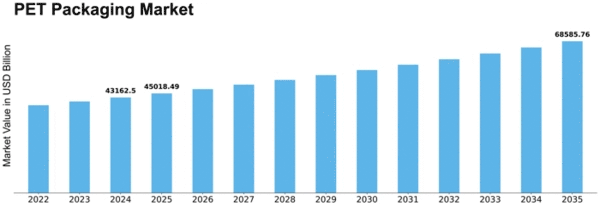


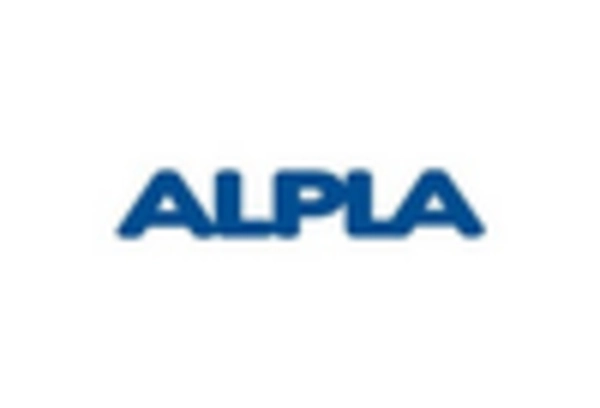
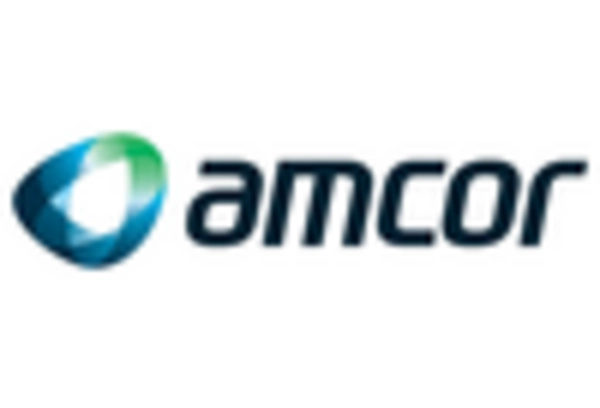
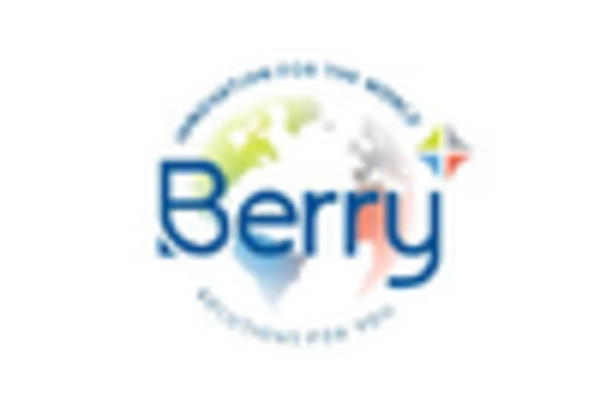
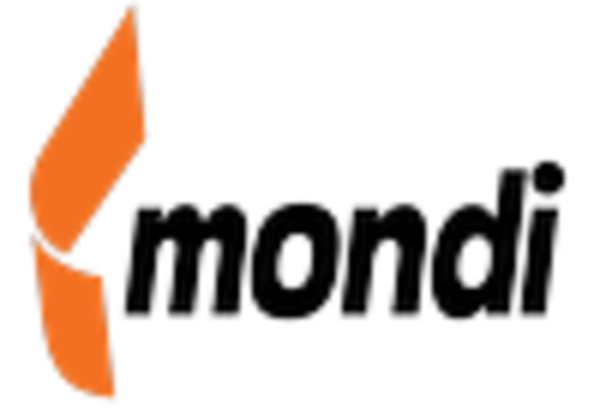
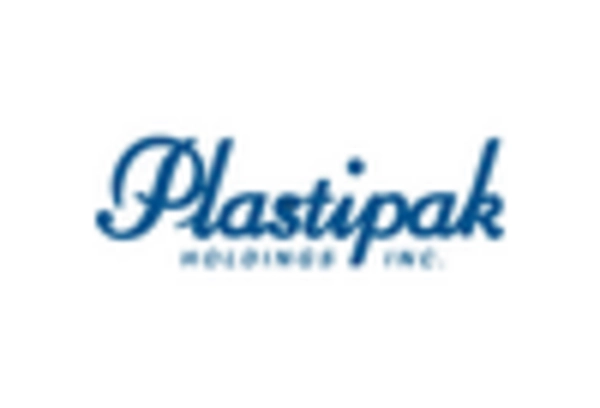
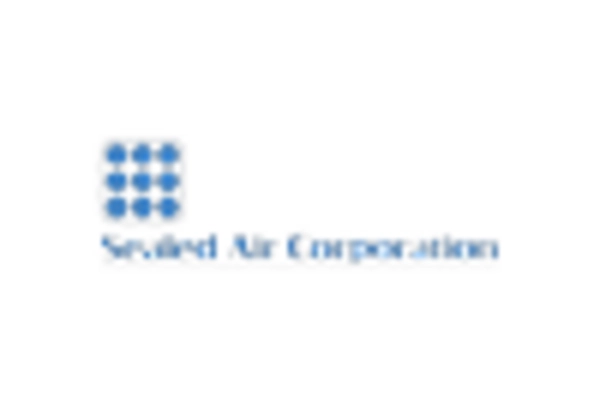









Leave a Comment